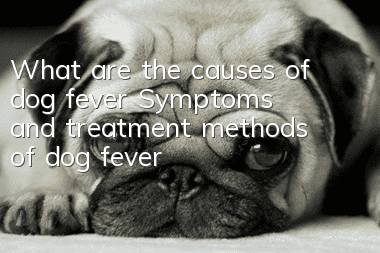What to do if your dog has ear inflammation

Treatment methods for dog ear inflammation
1. First, let the dog find a comfortable position. Ear cleaning takes a while.
2. If there are ear hairs in the dog’s ears, you need to use ear hair powder to pluck out the ear hairs first. Pour a little ear hair powder on the ear hairs and rub the dog’s outer ears to loosen the ear hairs. The powder is applied to the skin, and the ear hair powder has an anesthetic effect. Just pluck it out with your hands or an eyebrow plucking tool.
3. Use a cotton swab to carefully dip the dog's outer ear, which is where it can be seen, and clean the corners of the ear.
4. Put the mouth of the ear-dropping oil bottle deep into the dog’s outer ear where you can see the ear hole, and drop 5-6 drops at a time.
5. When instilling the drops, it is best to hold the medicine bottle with your left hand and hold the dog’s ear with your right hand. After the ear oil is quickly dripped into the ear canal, use your right hand holding the ear to quickly pinch the dog with your thumb and index finger. Squeeze the base of the dog's ear. The squeezing mentioned here is the pressure between the thumb and index finger. The hand shape is that the thumb and index finger are at the base of the dog's ear, and the other three fingers point outward. Dogs like this method very much.
6. After applying the medicine to both ears, hold the dog’s back head against each other with your hands, and at the same time, repeatedly squeeze the dog’s ears at a 45-degree angle to the back of the dog’s head. This is to allow the medicine to reach the dog’s head. Deep in the dog's ears.
7. Use a cotton swab to clean the dog’s outer ears.
Symptoms of dog ear inflammation
1. Dog ear inflammation is divided into otitis externa and otitis media. The symptoms include flushing, edema and itching of the external auditory canal in the early stage. Light yellow serous secretions flow from the ear canal and stain the coat under the ears.
2. Dogs often show uneasiness, often shaking their heads, or scratching their ears. As the disease progresses, local swelling intensifies, or pustules appear, and brown-black foul-smelling purulent secretions flow out. This often leads to hair loss at the base of the ears or dermatitis, and the sick dog's hearing decreases.
3. When it becomes chronic, it will be good and bad, with repeated attacks, and can cause the tissue of the ear canal to thicken, and even tumors to occur, leading to thickening of the auricle skin, auricle deformation and hearing impairment. .
4. In severe cases, inflammation invades the facial nerve and parasympathetic nerve, causing facial paralysis, dry keratitis and tympanic membrane perforation visible on nasal mucosa otoscopy.
- Correct the bad habit of Golden Retriever jumping on people
- Precautions for pet sterilization surgery
- How old can a Smiling Angel Samoyed be to train? A must-read for pet owners!
- 5 tips to teach you how to identify whether a Corgi is a skewer and how to choose a Corgi variety!
- How to feed a pit bull to make it strong? How to raise a pit bull!
- Where is the origin of Golden Retriever?
- How to train a dog, these three dog-raising experiences will help you
- Raising a dog is not as easy as you think. You need to understand these things before raising a dog.
- What should I do if my dog keeps barking when seeing strangers?
- What's going on with the dog sticking his butt out all the time?



